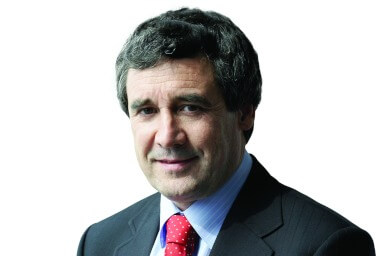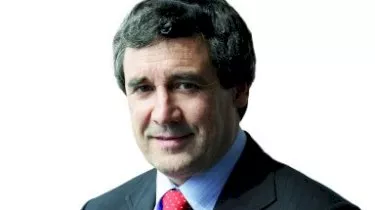Invest
Don’t let your portfolio end up like a gym membership
The start of the year is the ideal time to review your fund’s portfolio and strategy, and make the necessary changes, but what should you be looking to change in 2017?
Don’t let your portfolio end up like a gym membership
The start of the year is the ideal time to review your fund’s portfolio and strategy, and make the necessary changes, but what should you be looking to change in 2017?

New year’s resolutions and portfolio rebalancing face common challenges. Both spring from the best of intentions. Both can drift into the background as the holiday season draws to a close, and the urgency and demands of everyday life return.
For self-managed super funds (SMSFs), the more relaxed pace of life earlier in the year often presents the opportunity to review the fund’s portfolio and investment strategy.
Setting a fund’s asset allocation is arguably the most important decision SMSF trustees make.
At a time when there are heightened levels of uncertainty on the geopolitical stage, the value of rebalancing the portfolio periodically to keep it within the risk ranges you are comfortable possibly takes on even more importance.

As 2017 gets into full swing, it is worth reflecting on the year just gone. For SMSF trustees, a challenge can be knowing how your fund is performing and a critical data point is knowing what to benchmark your fund against.
Broad-based market index funds provide an easy and accessible way to measure your fund’s performance, while mainstream super funds are another point of reference.
In 2016, defensive assets like fixed interest did their job of providing stability to portfolios, with the Australian fixed interest index delivering 2.7 per cent and Australian government bonds 2.5 per cent.
Australian shares enjoyed another year of double digit returns with the Australian shares index fund delivering 11.5 per cent and the high-yield index fund slightly lower at 10.6 per cent.
International shares delivered 8.03 per cent on an unhedged basis, while if the currency impact was hedged out, the return was higher at 10.4 per cent.
Emerging markets and international small companies delivered 11.03 per cent and 13.02 per cent respectively on an unhedged basis. Global infrastructure index – a specialist asset class that can be hard for SMSFs to access directly – ended 2016 up 12.66 per cent.
On the property front, Australian listed property returned 13 per cent, while international listed property was 6.69 per cent with currency hedging.
When reviewing individual asset classes, the danger and/or temptation is to focus on the top-performing sector. At this point, it is worth remembering that past performance is never guaranteed to be repeated next year.
Potentially, a more meaningful benchmark for an SMSF to look at is the performance of diversified funds that invest in a spread of asset classes based on target risk levels.
In 2016, the conservative Vanguard index fund returned 6.06 per cent, the balanced fund 7.35 per cent, the growth fund 8.5 per cent and high growth 9.67 per cent.
The key comparison point here with an SMSF is understanding the portfolio split between defensive and growth assets. For example, a balanced fund is 50/50 while a growth fund is 70/30 growth assets to defensive assets.
The rebalancing question comes into play after one asset class has had a significant growth (or loss).
A typical SMSF has strong allocation to Australian shares, and according to Investment Trends research, around 40 per cent of an average SMSF portfolio is in local shares. Given 2016 returns of 11.5 per cent for the Australian share market, portfolios are likely to have moved out of target asset allocation ranges.
This is why the discipline of regular reviews of the SMSF portfolio’s asset allocation is so valuable.
If you find your SMSF portfolio has moved outside the tolerance levels you or your adviser has set, the next question is how do you go about rebalancing to get it back to the point where you are comfortable with the allocation.
The simplest way is to use new cash flows/contributions to buy more of the asset class that is now underweight.
Where it is more complex is if you do not have cash flows to work with and therefore need to consider selling some assets to provide the cash for the rebalance. This can involve both transaction costs and have potential tax implications, so it can be good to seek expert advice either from a financial adviser or an accountant specialising in SMSF work.
The concept of rebalancing is one of those things that is simple to say but harder to carry through. One of the emotional hurdles many investors struggle with when it comes time to rebalance is the reality that you are buying into the weakest performing asset class and potentially selling your strongest performing asset.
That can cause investors to procrastinate, which is when rebalancing ends up in the company of other well-intentioned new year’s resolutions.
Robin Bowerman, head of market strategy and communications, Vanguard Australia

Property
New investment platform Arkus allows Australians to invest in property for just $1
In a groundbreaking move to democratise investment in property-backed mortgage funds, GPS Investment Fund Limited has launched Arkus™, a retail investment platform designed to make investing ...Read more

Property
Help to Buy goes live: What 40,000 new buyers mean for banks, builders and the bottom line
Australia’s Help to Buy has opened, lowering the deposit hurdle to 2 per cent and aiming to support up to 40,000 households over four years. That single policy lever will reverberate through mortgage ...Read more

Property
Australia’s mortgage knife‑fight: investors, first‑home buyers and the new rules of lender competition
The mortgage market is staying hot even as rate relief remains elusive, with investors and first‑home buyers chasing scarce stock and lenders fighting for share on price, speed and digital experienceRead more

Property
Breaking Australia’s three‑property ceiling: the finance‑first playbook for scalable portfolios
Most Australian investors don’t stall at three properties because they run out of ambition — they run out of borrowing capacity. The ceiling is a finance constraint disguised as an asset problem. The ...Read more

Property
Gen Z's secret weapon: Why their homebuying spree could flip Australia's housing market
A surprising share of younger Australians are preparing to buy despite affordability headwinds. One in three Gen Z Australians intend to purchase within a few years and 32 per cent say escaping rent ...Read more

Property
Tasmania’s pet-positive pivot: What landlords, BTR operators and insurers need to do now
Tasmania will soon require landlords to allow pets unless they can prove a valid reason to refuse. This is more than a tenancy tweak; it is a structural signal that the balance of power in rental ...Read more

Property
NSW underquoting crackdown: the compliance reset creating both cost and competitive edge
NSW is moving to sharply increase penalties for misleading price guides, including fines linked to agent commissions and maximum penalties up to $110,000. Behind the headlines sits a more ...Read more

Property
ANZ’s mortgage growth, profit slump: why volume without margin won’t pay the dividends
ANZ lifted home-lending volumes, yet profits fell under the weight of regulatory and restructuring costs—an object lesson in the futility of growth that doesn’t convert to margin and productivityRead more

Property
New investment platform Arkus allows Australians to invest in property for just $1
In a groundbreaking move to democratise investment in property-backed mortgage funds, GPS Investment Fund Limited has launched Arkus™, a retail investment platform designed to make investing ...Read more

Property
Help to Buy goes live: What 40,000 new buyers mean for banks, builders and the bottom line
Australia’s Help to Buy has opened, lowering the deposit hurdle to 2 per cent and aiming to support up to 40,000 households over four years. That single policy lever will reverberate through mortgage ...Read more

Property
Australia’s mortgage knife‑fight: investors, first‑home buyers and the new rules of lender competition
The mortgage market is staying hot even as rate relief remains elusive, with investors and first‑home buyers chasing scarce stock and lenders fighting for share on price, speed and digital experienceRead more

Property
Breaking Australia’s three‑property ceiling: the finance‑first playbook for scalable portfolios
Most Australian investors don’t stall at three properties because they run out of ambition — they run out of borrowing capacity. The ceiling is a finance constraint disguised as an asset problem. The ...Read more

Property
Gen Z's secret weapon: Why their homebuying spree could flip Australia's housing market
A surprising share of younger Australians are preparing to buy despite affordability headwinds. One in three Gen Z Australians intend to purchase within a few years and 32 per cent say escaping rent ...Read more

Property
Tasmania’s pet-positive pivot: What landlords, BTR operators and insurers need to do now
Tasmania will soon require landlords to allow pets unless they can prove a valid reason to refuse. This is more than a tenancy tweak; it is a structural signal that the balance of power in rental ...Read more

Property
NSW underquoting crackdown: the compliance reset creating both cost and competitive edge
NSW is moving to sharply increase penalties for misleading price guides, including fines linked to agent commissions and maximum penalties up to $110,000. Behind the headlines sits a more ...Read more

Property
ANZ’s mortgage growth, profit slump: why volume without margin won’t pay the dividends
ANZ lifted home-lending volumes, yet profits fell under the weight of regulatory and restructuring costs—an object lesson in the futility of growth that doesn’t convert to margin and productivityRead more








